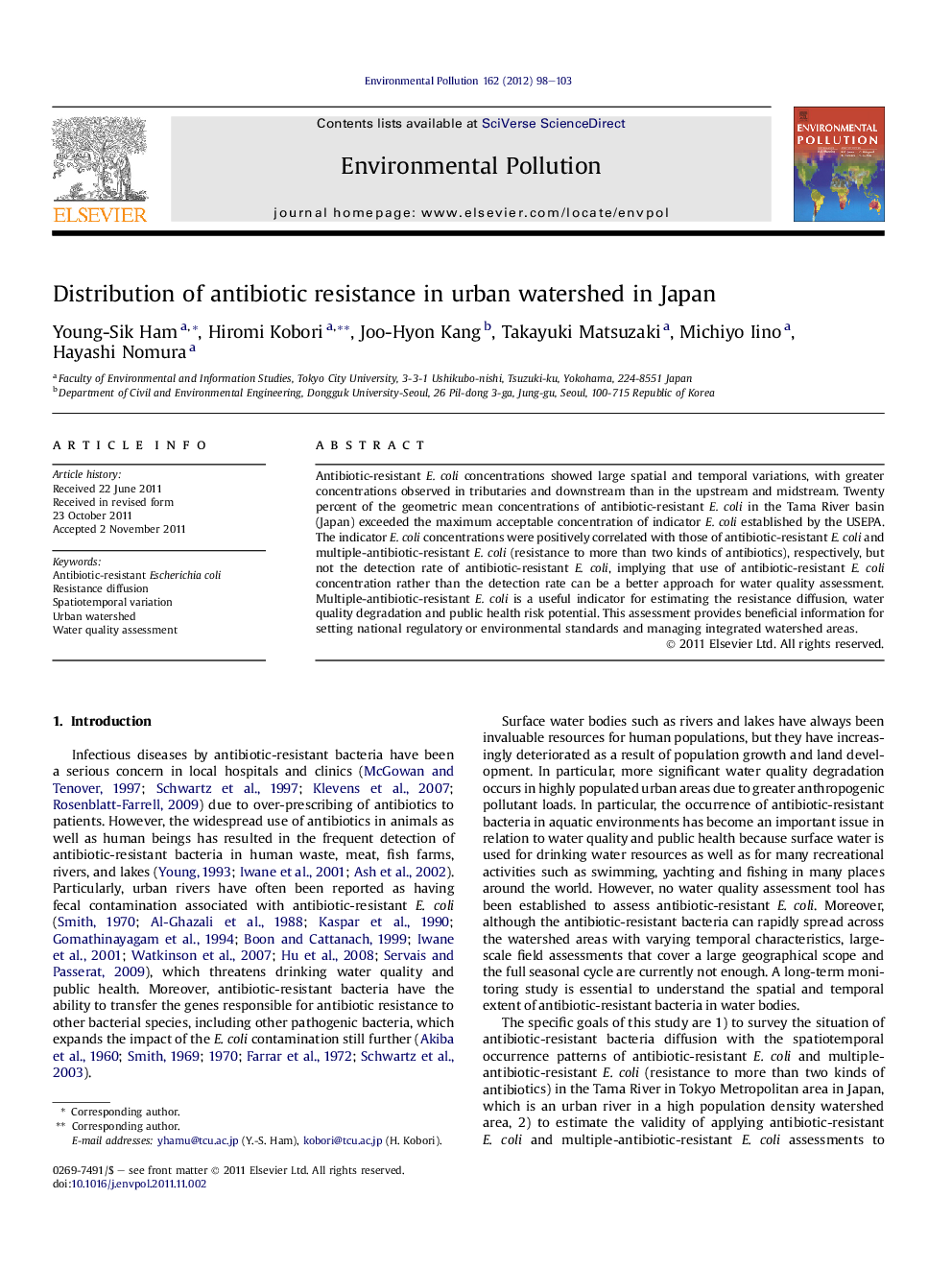| Article ID | Journal | Published Year | Pages | File Type |
|---|---|---|---|---|
| 4424960 | Environmental Pollution | 2012 | 6 Pages |
Antibiotic-resistant E. coli concentrations showed large spatial and temporal variations, with greater concentrations observed in tributaries and downstream than in the upstream and midstream. Twenty percent of the geometric mean concentrations of antibiotic-resistant E. coli in the Tama River basin (Japan) exceeded the maximum acceptable concentration of indicator E. coli established by the USEPA. The indicator E. coli concentrations were positively correlated with those of antibiotic-resistant E. coli and multiple-antibiotic-resistant E. coli (resistance to more than two kinds of antibiotics), respectively, but not the detection rate of antibiotic-resistant E. coli, implying that use of antibiotic-resistant E. coli concentration rather than the detection rate can be a better approach for water quality assessment. Multiple-antibiotic-resistant E. coli is a useful indicator for estimating the resistance diffusion, water quality degradation and public health risk potential. This assessment provides beneficial information for setting national regulatory or environmental standards and managing integrated watershed areas.
► We extensively observed antibiotic-resistant E. coli (AREc) in Tama River (Japan). ► AREc count rather than the detection rate is better approach for water quality test. ► Multiple-AREc is resistant to the antibiotic to which single-AREc has no resistance. ► Multiple-AREc increase will accelerate the diffusion of antibiotic resistance.
